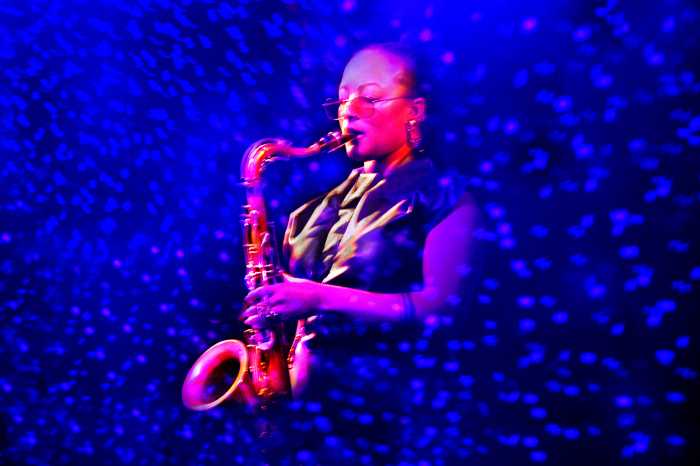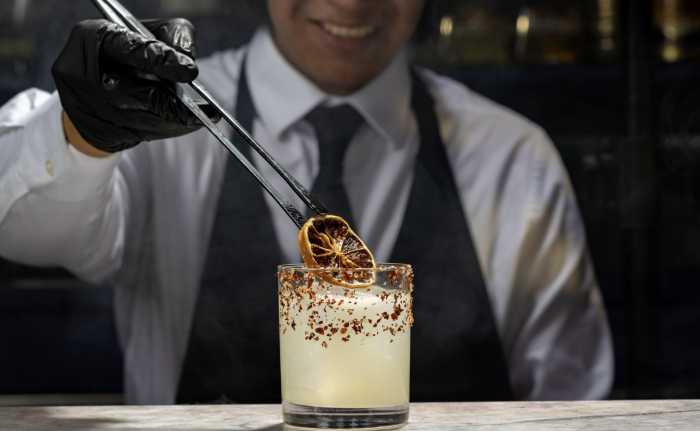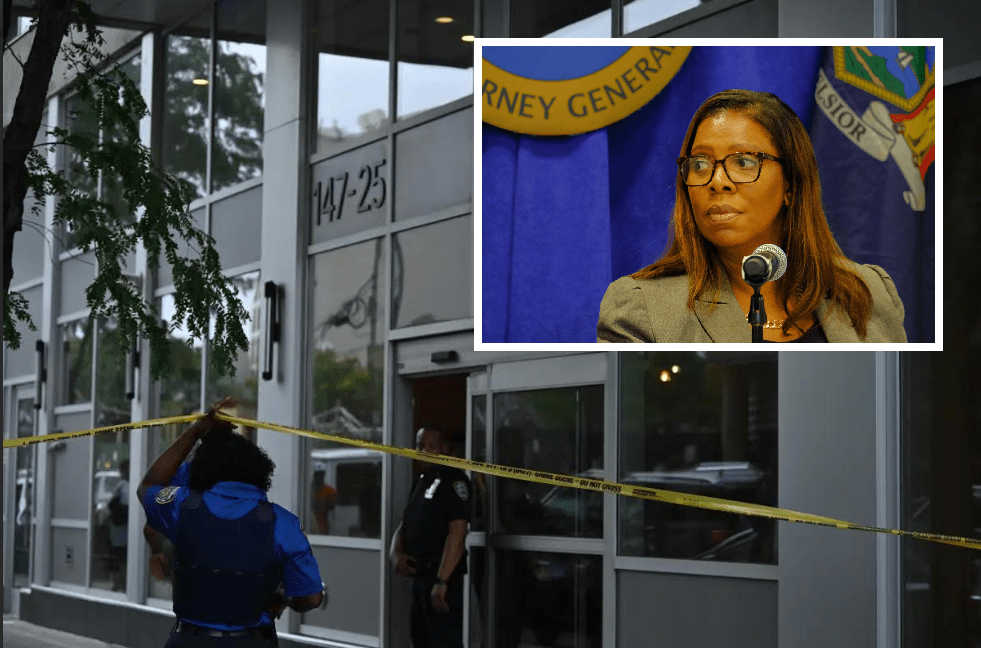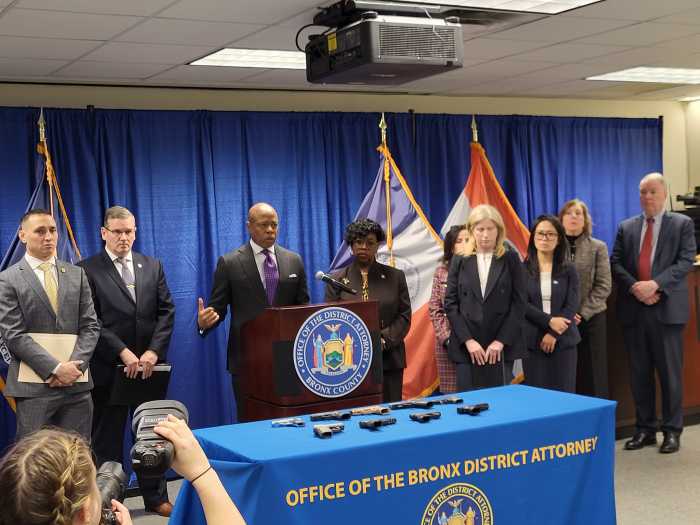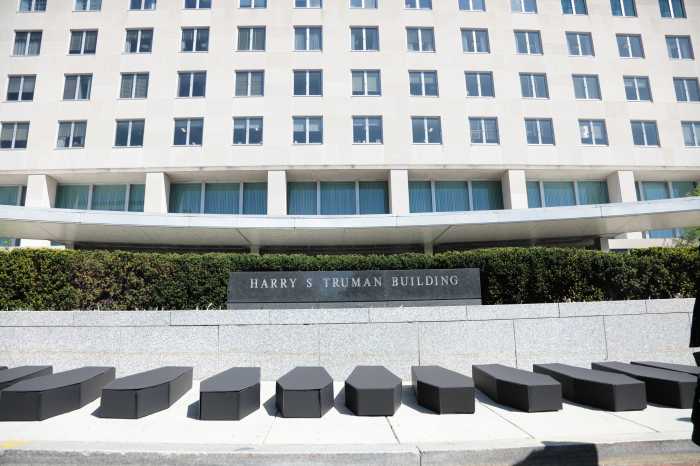By Stephanie Murg
New museum takes greater stock of financial history
Weekends are usually quiet on Wall Street, but on Saturday, Jan. 12, an excited crowd there gathered around a $10,000 bill, scrutinizing the unfamiliar face of Salmon P. Chase, while others listened to jetBlue founder David Neeleman give pointers on starting a company. A man in a pin-striped suit admired a row of vintage piggy banks. Across the room, a couple of teenaged girls traded stock tips while sitting on a sofa constructed of 7,000 welded-together nickels.
This wasn’t a Gordon Gekko dream sequence being filmed for the imminent sequel to “Wall Street” but a scene from the opening weekend of the Museum of American Finance, which now occupies the landmarked former headquarters of the Bank of New York at 48 Wall St.
Founded in 1988 by John E. Herzog, the retired chairman emeritus of leading Nasdaq market maker Herzog Heine Geduld (now owned by Merrill Lynch), the Smithsonian-affiliated institution began its life as the Museum of American Financial History in a modest, 250-square-foot space in the Standard Oil building at 26 Broadway. Its new home in a majestic banking hall offers 30,000 square feet of space that includes a state-of-the-art financial education center, auditorium, library, and research facility.
“While working in the financial services industry, I observed that the American public did not really understand the capital markets,” says Herzog, who now serves as the museum’s chairman. “So I thought that I would like to contribute to an enhanced understanding and that if people knew some of the background, if they could see and somehow experience it, then they would have a better picture of what was cooking.”
Seeded with Herzog’s own collection of financial artifacts, the museum grew steadily, soon outgrowing its original home. The road to relocation began approximately three years ago. Since then, the museum raised $9 million, including $1 million from the Lower Manhattan Development Corporation, negotiated a 20-year lease, completed extensive construction and restoration work at 48 Wall St., and designed and fabricated dazzling new exhibits.
“Anyone who takes on construction in Lower Manhattan is a pretty brave man,” says Lee Kjelleren, the museum’s president and CEO. “It’s very expensive and required a great deal of attention to detail. It’s just a really hard process. But it was great fun, and it turned out to be a marvelous success.”
The museum’s mission is twofold: to chronicle American financial development and to interpret current financial issues. “We want people to see not only where Wall Street is, but what it does and how its work might create opportunities for them as workers, consumers, and investors in our economy,” says museum trustee and guest curator Richard Sylla, a professor of financial history and economics at New York University’s Stern School of Business. “If a visitor spends a couple of hours in the museum reading, viewing, and thinking about what is there, he or she should become more financially literate.”
To design and shape just what those visitors would be looking at, reading, and thinking about, the museum turned to C&G Partners, the New York design consultancy that has created exhibits for such institutions as the Griffith Observatory, the National Museum of American History, and the New York Hall of Science. A team led by C&G founding partner Jonathan Alger was tasked with telling the story of American finance — from wampum to Bloomberg terminals — in a modern, engaging way inside an ornate old bank building. There was another wrinkle: everything in the museum had to be moveable and storeable, so that the space could be rented out in the evenings for corporate events. They had about a year to complete the project.
“We did have a curious challenge,” says Alger. “The first thing you have to do is design it backwards, so we started by laying out fully occupied storage areas. In other words, we figured out how much space we would have when the exhibits are gone to store them. That is the limit of how many exhibits we can have on the floor.”
The C&G team thought of the 1927 building itself as the largest object in the collection, and inside it they created a series of exhibits with multimedia presentations and moveable glass cases filled with financial artifacts and ephemera. “The exhibits now in place constitute a completely different order of magnitude for the presentation of this subject,” says Herzog. “That will elevate the subject in the eyes of many people and over time will create more sophisticated commentary and interest than we were able to do before.”
The largest exhibit, “Financial Markets,” encompasses stocks, bonds, commodities, and other “artifacts of boom and bust times.” Guided by clearly written narrative text that connects objects and photographs with historical events, visitors can examine a 1792 treasury bond that features the first use of the dollar sign on a federal document, vintage Fortune magazine covers, and a 1945 war bond adorned with Disney characters. A display on commodities provides tangible examples of everything from dry whey to pork bellies.
This exhibit also houses one of Herzog and Kjelleren’s favorite objects, a share in the doomed South Sea Company (better known as the “South Sea Bubble”) owned and signed by Isaac Newton, who bought in at the company’s peak in 1720. “This is neat because it shows you how one of the great figures of the 18th century — one of the most powerful and enlightened men, with access to everyone — could still make a dumb investment,” says Kjelleren. “It’s a lesson to everyone. Do your homework. Don’t just listen to what your friends say.”
There’s also a “teaching ticker” to demystify that perpetual scroll of symbols and share prices, and a feed from the New York Stock Exchange that enlivens the marble-lined space with the murmurs of commerce. “The cacophany is intentional,” said Alger. “We want people to get a sense of what is the lifeblood of finance that runs through this city.”
Over by the Palladian windows that overlook Wall St. are the “Banking in America” and “Entrepreneurs” exhibits. The former exhibit, lit cleverly by a series of green glass-shaded banker’s lamps, explains the mechanics of banking, including a smile-inducing audio clip of George Bailey in “It’s a Wonderful Life” discussing how banks put your deposits to work.
The entrepreneurs section, curated by Kjelleren, features a series of video interviews produced by David Tarnow in which the likes of Brooklyn Brewery founder Steve Hindy and maternitywear magnate Liz Lange discuss how they built their businesses. Some of the videos play on screens that seem to magically float inside large wall mirrors — at the press of a button, the screen is gone and the mirror back to normal.
Among the other highlights are a special gallery for rotating exhibits, a pocket theater featuring short subject videos, and a room devoted to Alexander Hamilton. “I like the Hamilton Room because it draws needed attention to that founding father’s key role in making the United States a modern nation before most others,” says Sylla. “Hamilton is something like the patron saint of our museum.” The fact that 48 Wall St. once housed the Bank of New York, which Hamilton founded in 1784, is only fitting.
Alger grants that the museum’s subject may not be perceived as particularly sexy. But if early visitor reactions are any indication, the museum is achieving its goal of piquing people’s interest in finance and helping them to better understand it.
“There was a day when a lot of people would say, ‘Golf? There’s no one interesting playing golf.’ Now all that’s different, but there had to be the first one,” says Alger. “We’re not trying to be the Tiger Woods of finance museums, but we are trying to take a situation where there was nothing to compare it to and have the first thing be something quite good.”
For more information on the museum, visit financialhistory.org.



